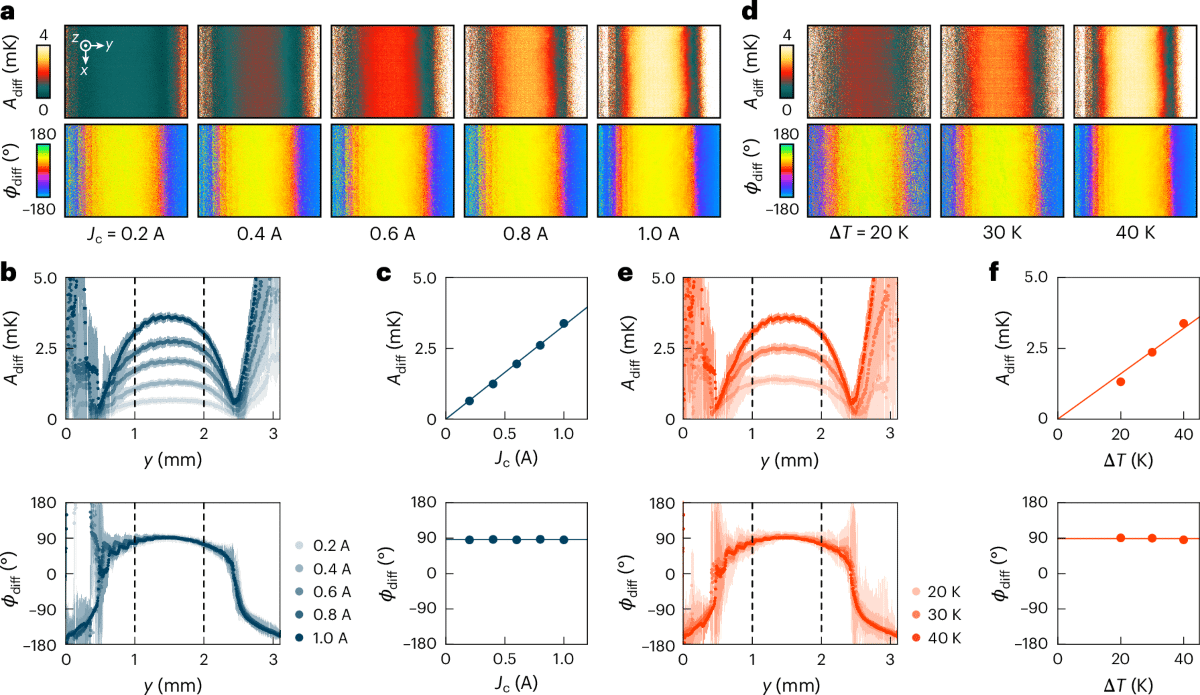Experimental Observation of Transverse Thomson Effect: Unlocking Potential

In a groundbreaking study recently published, researchers have made the first experimental observation of the transverse Thomson effect, a significant thermoelectric phenomenon that has eluded scientists since its prediction nearly a century ago. This effect relates to the interplay between heat and electricity, building on foundational thermoelectric principles established in the 1800s, including the Peltier, Seebeck, and Thomson effects. The Thomson effect specifically involves heating or cooling that occurs when an electric current flows through a conductor with a temperature gradient in the same direction.
How Scientists Isolated the Elusive Transverse Thomson Effect
A team of scientists led by Atsushi Takahagi has successfully isolated the transverse Thomson effect, which arises from the interaction of electric current, magnetic fields, and temperature gradients. Their innovative approach involved applying temperature modulations that oscillate at the same frequency as periodic electric currents. By conducting two sets of measurements, the researchers were able to distinguish the Thomson effect from other overlapping signals, marking a significant advancement in thermoelectric research.
The Role of Bismuth Antimony Alloy in Demonstrating the Effect
For their experiments, the researchers selected a bismuth antimony alloy, known for exhibiting a strong Nernst effect at room temperature. This effect occurs when a temperature gradient and magnetic field are applied orthogonally, resulting in the generation of an electric field perpendicular to both. Conversely, the Ettingshausen effect produces a temperature gradient from the interaction of magnetic and electric fields. The team discovered that the transverse Thomson effect is influenced by the temperature derivative of the Nernst coefficient, differing from traditional thermoelectric effects.
Switching Between Heating and Cooling Using Magnetic Fields
One of the most intriguing findings of the study was the ability to switch between heating and cooling by simply altering the direction of the magnetic field. This dynamic interaction led to a reversal in the sign of the effect at varying magnetic field strengths, a phenomenon that was confirmed through both experimental and numerical simulations. This capability opens up new avenues for controlling thermal management in various applications.
New Possibilities for Thermal Management and Future Research Directions
The discovery of the transverse Thomson effect paves the way for innovative thermal management applications, particularly in scenarios where precise heat control is essential. Future research may focus on identifying new materials that enhance the gradients of the transverse Thomson coefficient, ensuring they amplify rather than cancel each other out. Such advancements could signal a new era of high-performance thermoelectric materials, furthering the understanding and application of thermoelectric phenomena.
Observer Voice is the one stop site for National, International news, Sports, Editor’s Choice, Art/culture contents, Quotes and much more. We also cover historical contents. Historical contents includes World History, Indian History, and what happened today. The website also covers Entertainment across the India and World.
Follow Us on Twitter, Instagram, Facebook, & LinkedIn

